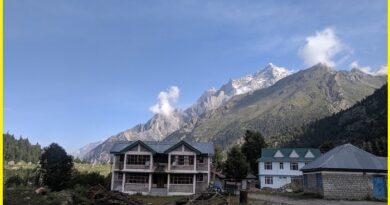Jallianwala Bagh-Symbol of Struggle and Resilience
Jallianwala Bagh
Jallianwala Bagh is a public garden located in Amritsar, Punjab, India. It is renowned for its historical significance, particularly for the tragic events that unfolded there on April 13, 1919, known as the Jallianwala Bagh Massacre. Jallianwala Bagh Massacre occurred during the British colonial rule in India. British troops, under the command of Colonel Reginald Dyer, fired on a peaceful gathering of unarmed civilians who had assembled in the garden to protest against oppressive British policies.
Today, Jallianwala Bagh Amritsar serves as a memorial to those who lost their lives in the massacre. The garden contains a memorial plaque and numerous bullet marks on the walls, serving as somber reminders of the tragic event.
Jallianwala Bagh Massacre
The Jallianwala Bagh massacre was a tragic event that occurred on April 13, 1919, in Amritsar, Punjab, during British colonial rule. Tensions were high in India due to the oppressive policies of the British Raj, including the Rowlatt Act, which authorized the government to imprison individuals without trial. Indians were protesting against these laws and demanding greater civil liberties and independence.
Gathering at Jallianwala Bagh-On the day of the massacre, thousands of men, women, and children had gathered at Jallianwala Bagh, a public garden in Amritsar, to peacefully protest against the arrest of prominent Indian leaders and to express their opposition to British policies.

Colonel Dyer’s Actions- Acting on orders from Brigadier-General Reginald Dyer, British troops, including Gurkha and Baluchi soldiers, arrived at Jallianwala Bagh and blocked the exits, trapping the crowd inside the enclosed space. Without any warning or order to disperse, the troops opened fire on the unarmed civilians for about 10 to 15 minutes.
Casualties- The exact number of casualties is disputed, but it is estimated that hundreds of people were killed, and thousands were injured in the indiscriminate firing. Many of the victims were women and children. The firing only ceased when the troops ran out of ammunition.
Aftermath-The Jallianwala Bagh massacre shocked the nation and drew international condemnation. It sparked outrage and led to widespread protests against British rule in India. Mahatma Gandhi, who was already leading the non-cooperation movement, called for peaceful resistance against British oppression.
Also Read- ‘Chandni Chowk’- A Journey Through Delhi’s Historic Heart
The British government suspended General Dyer’s actions, and he was later relieved of his command and censured by an official inquiry. However, his actions were also praised by some in Britain, highlighting the deep divisions and attitudes prevailing at the time.
Jallianwala Bagh Hatyakand Kab Hua
The Jallianwala Bagh massacre occurred on April 13, 1919, in Amritsar, under the command of Colonel Reginald Dyer fired on unarmed civilians who had gathered at Jallianwala Bagh to participate in a peaceful protest against British policies. The massacre resulted in hundreds of deaths and thousands of injuries.
General Dyer
General Reginald Dyer, also known as Colonel Dyer, was a British military officer who is infamous for his role in the Jallianwala Bagh massacre in Amritsar, Punjab, India, on April 13, 1919. Dyer was born in 1864 in Murree, British India (now in Pakistan), and he served in the British Indian Army.
During the Jallianwala Bagh massacre, Dyer ordered British troops under his command to open fire on a crowd of unarmed Indian civilians who had gathered at Jallianwala Bagh to participate in a peaceful protest against British colonial rule and oppressive policies. The troops fired indiscriminately into the crowd for about 10 to 15 minutes, resulting in hundreds of deaths and thousands of injuries.
He was widely criticized for the indiscriminate and brutal use of force against unarmed civilians. Despite facing censure from some quarters, Dyer also had supporters in Britain who praised his actions.
Dyer was eventually removed from his command and faced an official inquiry into his conduct, known as the Hunter Commission. The commission was relieved of his duties. However, he remained unapologetic for his actions and defended his decision to open fire on the crowd.

Places to visit near Jallianwala Bagh
There are several significant places to visit near Jallianwala Bagh Amritsar, Punjab, India. Here are some notable attractions.
Golden Temple (Harmandir Sahib)
Located just a short walk away from Jallianwala Bagh, the Golden Temple is the holiest shrine of Sikhism. It is known for its stunning architecture, serene ambiance, and sacred pool (Sarovar) that surrounds it.
Partition Museum
Situated near the Golden Temple, the Partition Museum chronicles the history and aftermath of the partition of India in 1947. It features exhibits, artifacts, and personal stories related to one of the most significant events in South Asian history.
Akal Takht
Adjacent to the Golden Temple, Akal Takht is one of the five Takhts (seats of authority) of Sikhism. It is a symbol of political and religious sovereignty and serves as a center for the Sikh community’s decision-making process.

Wagah Border
Located around 28 kilometers from Amritsar, the Wagah Border is the only road border crossing between India and Pakistan. Visitors can witness the Beating Retreat Ceremony, a military spectacle that takes place every evening before sunset.
Durgiana Temple
Also known as the Lakshmi Narayan Temple, the Durgiana Temple is dedicated to Goddess Durga and is situated near the Golden Temple. It is built in a similar architectural style and attracts devotees and tourists alike.
Gobindgarh Fort
Gobindgarh Fort is a historic fort located in the heart of Amritsar. It offers insights into the military history of Punjab and houses museums, exhibitions, and cultural performances.
Ram Bagh Garden
Ram Bagh, also known as the Company Bagh, is a beautiful garden located near the Golden Temple. It features lush greenery, flower beds, and a statue of Maharaja Ranjit Singh, the founder of the Sikh Empire.
How to Reach Jallianwala Bagh
The nearest airport to Amritsar is Sri Guru Ram Dass Jee International Airport, which is located about 13 kilometers away from the city center. From the airport, you can hire a taxi or take a pre-paid taxi service to reach Jallianwala. Amritsar Junction is the main railway station in Amritsar and is well-connected to major cities across India. From the railway station, you can hire a taxi or an auto-rickshaw to reach Jallianwala Bagh, which is located approximately 2 kilometers away.
Amritsar is well-connected by roadways, and there are regular bus services operated by state transport as well as private operators. You can also drive to Amritsar using your vehicle or hire a taxi. Once you reach Amritsar, Jallianwala Bagh is easily accessible by road.



